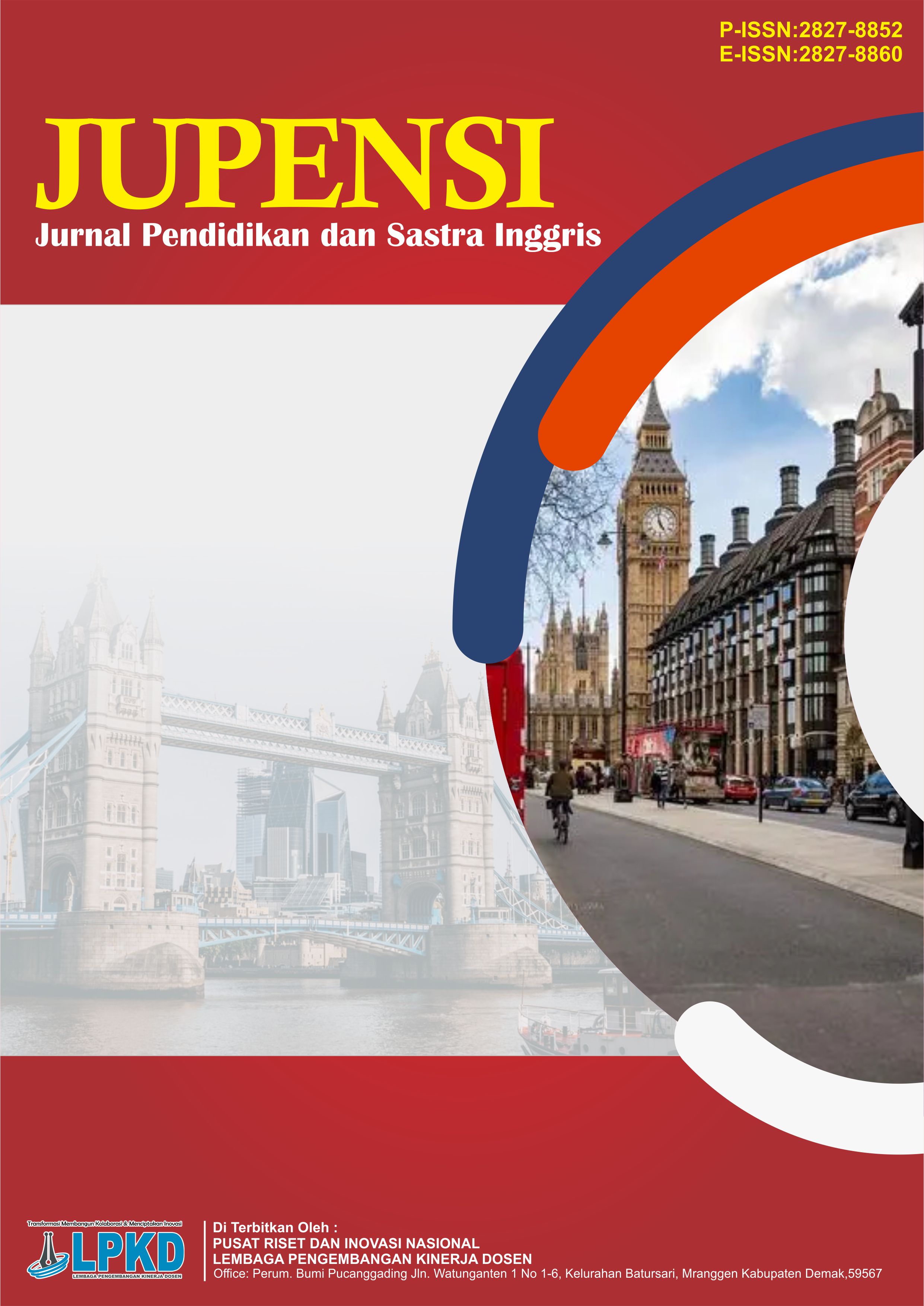The Implementation of Digital Storytelling Applications to Improve Elementary Students’ English-Speaking Skills
DOI:
https://doi.org/10.55606/jupensi.v5i3.6274Keywords:
Digital Storytelling, Elementary Students, English Learning, Interactive Learning, Speaking SkillsAbstract
English-speaking ability is a crucial communication skill that needs to be developed from an early age to enhance students’ competence in the globalized era. However, many elementary school students still struggle to speak English fluently due to the lack of interactive learning media and low self-confidence in expressing ideas. This study aims to analyze the implementation of a digital storytelling application as an innovative learning medium to improve students’ English-speaking skills. The research employed a Classroom Action Research (CAR) design integrating both qualitative and quantitative approaches. The study was carried out through four stages: planning, implementation, observation, and reflection. Data were collected through observations, interviews, and pre- and post-speaking tests to measure students’ improvement in fluency, pronunciation, vocabulary, and confidence. The findings indicate that the use of digital storytelling significantly enhanced students’ speaking performance, motivation, and engagement in learning activities. Furthermore, the interactive features of the application encouraged students to participate actively and creatively in storytelling sessions, creating a more enjoyable and meaningful language learning experience. Therefore, the integration of digital storytelling in English learning is recommended as an effective pedagogical strategy to foster communication competence and learner autonomy among elementary school students.
Downloads
References
Belda-Medina, J. R., & Goddard, A. (2024). Digital storytelling for grammar and language skills enhancement: A multimodal approach to English language learning. Journal of Language and Technology Integration, 18(1), 45–59.
Brown, H. D. (2000). Principles of language learning and teaching (4th ed.). Longman.
Brown, H. D. (2004). Language assessment: Principles and classroom practices. Pearson Education.
Creswell, J. W. (2014). Research design: Qualitative, quantitative, and mixed methods approaches (4th ed.). SAGE Publications.
Hafner, C. A., & Miller, L. (2011). Fostering learner autonomy in English through digital storytelling. Language Learning & Technology, 15(3), 68–86. https://doi.org/10.64152/10125/44263
Harmer, J. (2007). The practice of English language teaching (4th ed.). Pearson Longman.
Hasby, N., Perdana, I., & Kodriyah, L. (2024). A systematic literature review on Grammarly in English studies: Advantages that dazzle and disadvantages that fazzle. AJELP: Asian Journal of English Language and Pedagogy, 12(2), 139–154. https://doi.org/10.37134/ajelp.vol12.2.10.2024
Hava, K. (2021). Interactive digital storytelling in English language education: Improving vocabulary and pronunciation through learner engagement. Education and Information Technologies, 26(2), 2345–2362.
Hung, S. T. A., Hwang, G. J., & Huang, I. (2012). A project-based digital storytelling approach for improving students' learning motivation, problem-solving competence and learning achievement. Educational Technology & Society, 15(4), 368–379.
Kemmis, S., & McTaggart, R. (1988). The action research planner. Deakin University Press.
Kodriyah, L., Albakri, I. S. M. A., & Hakim, A. R. (2024). EFL teachers' views towards the need of evaluating English language teaching (ELT) textbooks for classroom instruction. Jurnal Review Pendidikan dan Pengajaran (JRPP), 7(2), 5438–5442. https://doi.org/10.31004/jrpp.v7i2.28095
Liu, M., Wu, N., & Chen, J. (2014). Digital storytelling for enhancing grammar understanding: An empirical study. Computers in the Schools, 31(3), 198–215.
Noor, P., Kodriyah, L., & Angrum, A. T. (2024). A critical discourse analysis on gender bias depicted from Indonesian ELT textbook for junior high school. AJELP: Asian Journal of English Language and Pedagogy, 12(1), 104–119. https://doi.org/10.37134/ajelp.vol12.1.9.2024
Nunan, D. (1993). Introducing discourse analysis. Penguin English.
Nunan, D. (2013). Practical English language teaching: Speaking. McGraw-Hill Education.
Rahimi, M., & Soleymani, F. (2015). The impact of digital storytelling on EFL learners’ oracy skills and motivation. Procedia – Social and Behavioral Sciences, 192, 23–30.
Richards, J. C. (2001). Curriculum development in language teaching. Cambridge University Press. https://doi.org/10.1017/CBO9780511667220
Robin, B. R. (2008). Digital storytelling: A powerful technology tool for the 21st-century classroom. Theory into Practice, 47(3), 220–228. https://doi.org/10.1080/00405840802153916
Sadik, A. (2008). Digital storytelling: A meaningful technology-integrated approach for engaged student learning. Educational Technology Research and Development, 56(4), 487–506. https://doi.org/10.1007/s11423-008-9091-8
Schmoelz, A. (2018). Enabling co-creativity through digital storytelling in education. Thinking Skills and Creativity, 28, 1–13. https://doi.org/10.1016/j.tsc.2018.02.002
Thornbury, S. (2005). How to teach speaking. Pearson Education.
Whisnubrata, A. A. A. A., & Dimara, J. (2023). English for life: Menginspirasi siswa untuk mencintai bahasa Inggris dan mengaplikasikannya dalam kehidupan sehari-hari. Jurnal Pengabdian Mandiri, 2(11), 2353–2360.
Wu, T. T., & Chen, Y. C. (2020). A systematic review of digital storytelling in language learning: Benefits, challenges, and future directions. Educational Research Review, 30(1), 100–118.
Yang, Y. T. C., & Wu, W. C. I. (2012). Digital storytelling for enhancing student academic achievement, critical thinking, and learning motivation: A year-long experimental study. Computers & Education, 59(2), 339–352. https://doi.org/10.1016/j.compedu.2011.12.012
Downloads
Published
How to Cite
Issue
Section
License
Copyright (c) 2025 Jurnal Pendidikan dan Sastra Inggris

This work is licensed under a Creative Commons Attribution-ShareAlike 4.0 International License.









